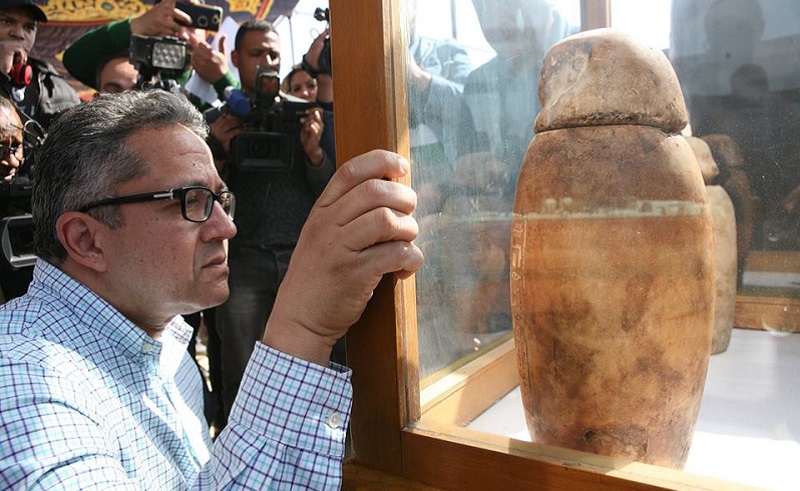Massive 26th Dynasty Pharaonic Necropolis Uncovered In Minya
Statues, coffins and a well-preserved mummies are just some of the discoveries in earliest stages in what is being hailed as a remarkable discovery.

In one of the most significant archaeological finds in recent times, an Egyptian archaeological expedition led by secretary of the Supreme Council of Antiquities, Mostafa Waziri, discovered an ancient 26th Dynasty cemetery dating all the way back to the interface between the Pharaonic and Ptolemaic era. A large portion of the family graves, comprised thus far of 8 tombs, 40 limestone sarcophagi and 1000 whole statues, seems to have been dedicated to priests of the ancient Egyptian god of the moon and writing, Thoth.
The excavation, located about six kilometres south of Tuna Al-Gabal, started in the last few months of 2017, and though still in its earliest phases, the items of interest unearthed thus far can only mean more significant discoveries lie in wait.
“Excavation work is scheduled to last for five years in an attempt to uncover all the burials of the cemetery,” Egypt’s minister of Antiquities, Khaled al-Anany, said in a live Facebook video during the initial announcement. So far 13 burials were discovered within the tomb, in addition to a large collection of Egyptian Faience funerary Ushabti figurines as well as four alabaster Canopic jars containing well-preserved mummified organs.
“They are in a very good state of conservation. They still contain the mummified inner organs of the deceased. The jars are decorated with hieroglyphic texts showing the name and titles of their owner,” Wazizi said.
The most noteworthy find, however, would have to be the mummy of high-priest Djehuty-Itdy-Es; a prominent priest of Thoth, the mummy was in particularly lavish condition, being adorned with a bronze collar, multi-coloured beads, bronze-gilded sheets and two eyes carved in bronze, encrusted with ivory and crystal beads.
This is just the latest in a string of recent archaeological discoveries hidden in Egypt's shifting sands, with excavations digging up ancient Pharaonic tombs, prominent Roman temples, and on a more paleontological note, the remains of a hitherto undocumented titanosaur also taking place in recent times.























